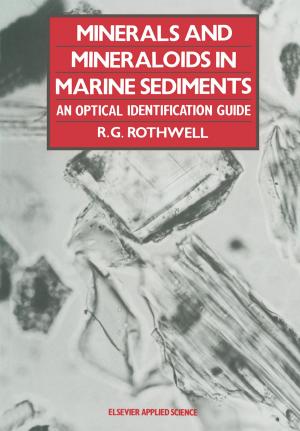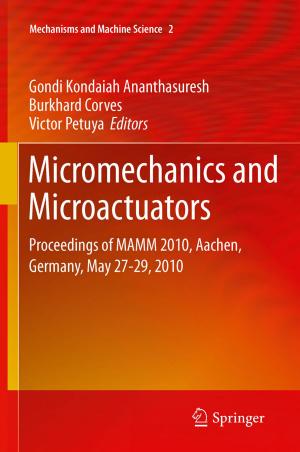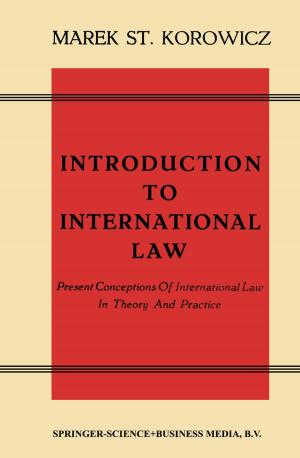Poucher’s Perfumes, Cosmetics and Soaps
Nonfiction, Science & Nature, Science, Chemistry, Clinical, Health & Well Being, Medical, Specialties, Pharmacy| Author: | ISBN: | 9789401727341 | |
| Publisher: | Springer Netherlands | Publication: | June 29, 2013 |
| Imprint: | Springer | Language: | English |
| Author: | |
| ISBN: | 9789401727341 |
| Publisher: | Springer Netherlands |
| Publication: | June 29, 2013 |
| Imprint: | Springer |
| Language: | English |
Poucher's Perfumes Cosmetics and Soaps has been in print since 1923 and is the classic reference work in the field of cosmetics. Now in a fully updated 10th edition, this new volume provides a firm basic knowledge in the science of cosmetics (including toiletries) as well as incorporating the latest trends in scientific applications and legislation which have occurred since the 9th edition.
This edition will not only be an excellent reference book for students entering the industry but also for those in specialized research companies, universities and other associated institutions who will be able to gain an overall picture of the modern cosmetic science and industry.
The book has been logically ordered into four distinct parts. The historical overview of Part 1 contains an essay demonstrating William Arthur Poucher's influence on the 20th Century cosmetics industry as well as a chapter detailing the long history of cosmetics.
Part 2 is a comprehensive listing of the properties and uses of common cosmetic types, ranging from Antiperspirants through to Sunscreen preparations. There are an increased number of raw materials in use today and their chemical, physical and safety benefits are carefully discussed along with formulation examples. The many additions since the last edition demonstrate the dramatic recent expansion in the industry and how changes in legal regulations affecting the development, production and marketing of old, established and new products are operative almost worldwide. Information on specialist products for babies and others is included within individual chapters.
The chapters in Part 3 support and outline the current guidelines regarding the assessment and control of safety and stability. This information is presented chemically, physically and microbiologically.
Part 3 chapters also detail requirements for the consumer acceptability of both existing and new products. Those legal regulations now in force in the EU, the USA and Japan are carefully described in a separate chapter and the remaining chapters have been extensively updated to explain the technical and practical operations needed to comply with regulations when marketing. This information will be invaluable to European Union and North American companies when preparing legally required product information dossiers.
The final chapters in Part 4 contain useful information on the psychology of perfumery as well as detailing methods for the conduct of assessment trials of new products.
As ingredient labelling is now an almost universal legal requirement the International Nomenclature of Cosmetics Ingredients (INCI) for raw materials has been used wherever practicable.
The advertised volume is the 10th edition of what was previously known as volume 3 of Poucher's Cosmetics and Soaps. Due to changes in the industry there are no plans to bring out new editions of volume 1 and 2.
Poucher's Perfumes Cosmetics and Soaps has been in print since 1923 and is the classic reference work in the field of cosmetics. Now in a fully updated 10th edition, this new volume provides a firm basic knowledge in the science of cosmetics (including toiletries) as well as incorporating the latest trends in scientific applications and legislation which have occurred since the 9th edition.
This edition will not only be an excellent reference book for students entering the industry but also for those in specialized research companies, universities and other associated institutions who will be able to gain an overall picture of the modern cosmetic science and industry.
The book has been logically ordered into four distinct parts. The historical overview of Part 1 contains an essay demonstrating William Arthur Poucher's influence on the 20th Century cosmetics industry as well as a chapter detailing the long history of cosmetics.
Part 2 is a comprehensive listing of the properties and uses of common cosmetic types, ranging from Antiperspirants through to Sunscreen preparations. There are an increased number of raw materials in use today and their chemical, physical and safety benefits are carefully discussed along with formulation examples. The many additions since the last edition demonstrate the dramatic recent expansion in the industry and how changes in legal regulations affecting the development, production and marketing of old, established and new products are operative almost worldwide. Information on specialist products for babies and others is included within individual chapters.
The chapters in Part 3 support and outline the current guidelines regarding the assessment and control of safety and stability. This information is presented chemically, physically and microbiologically.
Part 3 chapters also detail requirements for the consumer acceptability of both existing and new products. Those legal regulations now in force in the EU, the USA and Japan are carefully described in a separate chapter and the remaining chapters have been extensively updated to explain the technical and practical operations needed to comply with regulations when marketing. This information will be invaluable to European Union and North American companies when preparing legally required product information dossiers.
The final chapters in Part 4 contain useful information on the psychology of perfumery as well as detailing methods for the conduct of assessment trials of new products.
As ingredient labelling is now an almost universal legal requirement the International Nomenclature of Cosmetics Ingredients (INCI) for raw materials has been used wherever practicable.
The advertised volume is the 10th edition of what was previously known as volume 3 of Poucher's Cosmetics and Soaps. Due to changes in the industry there are no plans to bring out new editions of volume 1 and 2.















